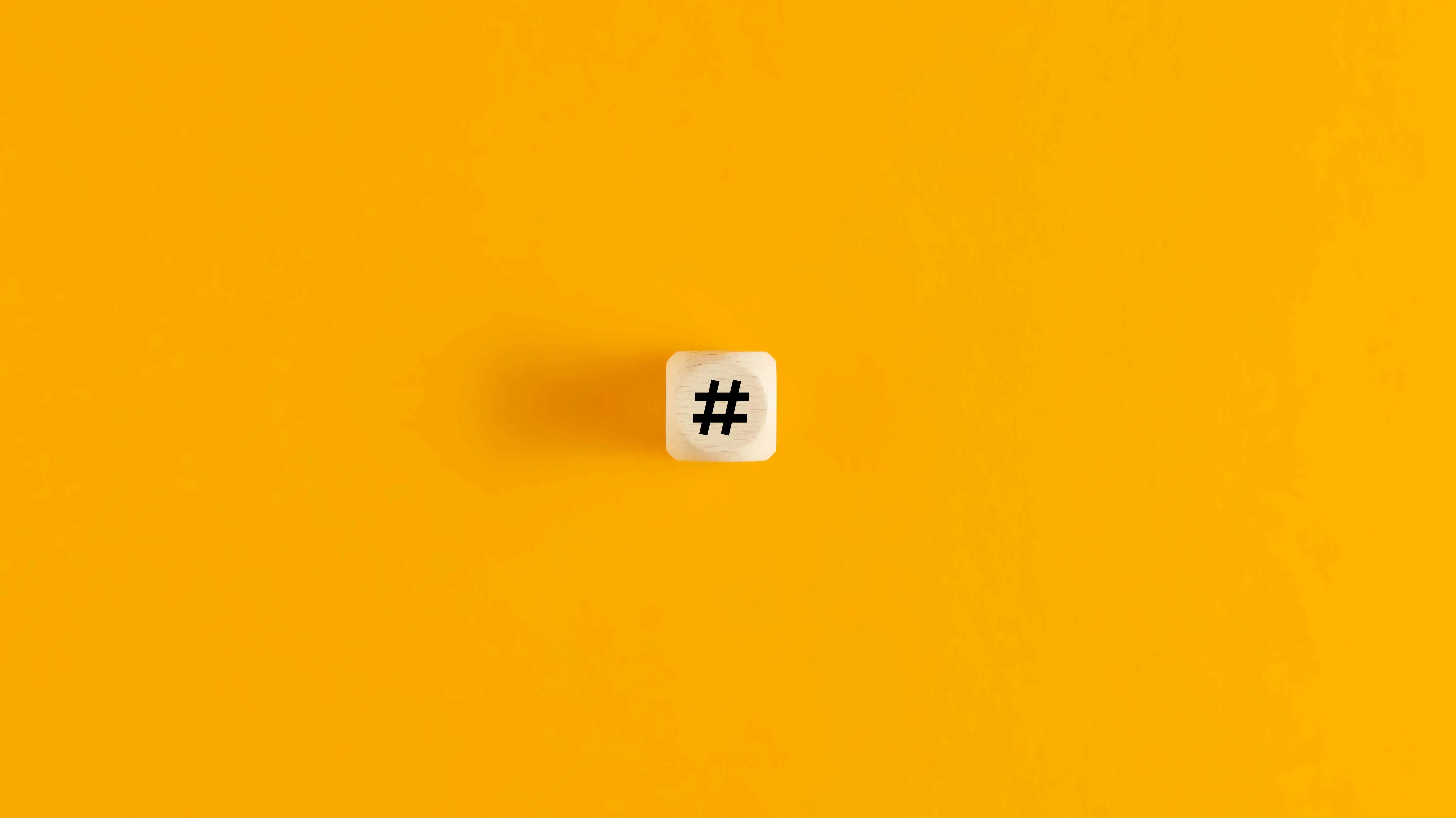When it comes to web design, there are lots of design philosophies to consider. Minimalist design started as an art movement in the 1940s and became popular in the 1960s. It’s found in all types of art, architecture, music, and writing. It made its way into web design as a response to the maximalism of the early 2000s. In this post, we’ll explore minimalist website design to help you decide if it’s right for your website needs.
What is Minimalist Website Design?
First, let’s define minimalist website design. It’s a design philosophy that uses as few elements as possible to create a clean and usable website. It refers to the overall layout and content design. It strips the website down to its most basic essentials to make a layout that’s succinct- only what is needed.
This is accomplished with a focus on several design concepts. Any one of these concepts alone does not make a website minimalist, but the design does become minimalist website design when most, if not all, of the concepts, are combined. Let’s explore them with examples from the WordPress repository.
Flat Design
First on our list is flat design. While it’s different from minimalist design, flat design is one of the most popular techniques used in minimalist design. Elements can use flat design without being minimalistic.
Flat design refers to the visuals used on the website and includes icons, graphics, illustrations, fonts, etc. It doesn’t use shadows, gradients, textures, or other highlights. It doesn’t attempt to look 3D. Areas of color are solid. This includes buttons, backgrounds, etc. Graphics have sharp edges. It removes all unnecessary visuals. Any lines that separate elements are fine lines.
Unfortunately, a flat design can make it difficult for users to know what is clickable. This means the flat design should be used carefully. It’s best not to stick to flat design too strictly when it comes to user interfaces. Use color, underlines, or outlines to make it obvious what’s clickable. Skeuomorphic design is a good alternative, which we’ll discuss later.
This example is the WordPress theme Ona Minimal. It includes one image with colors that match the theme, two blocks of solid color, and flat icons.
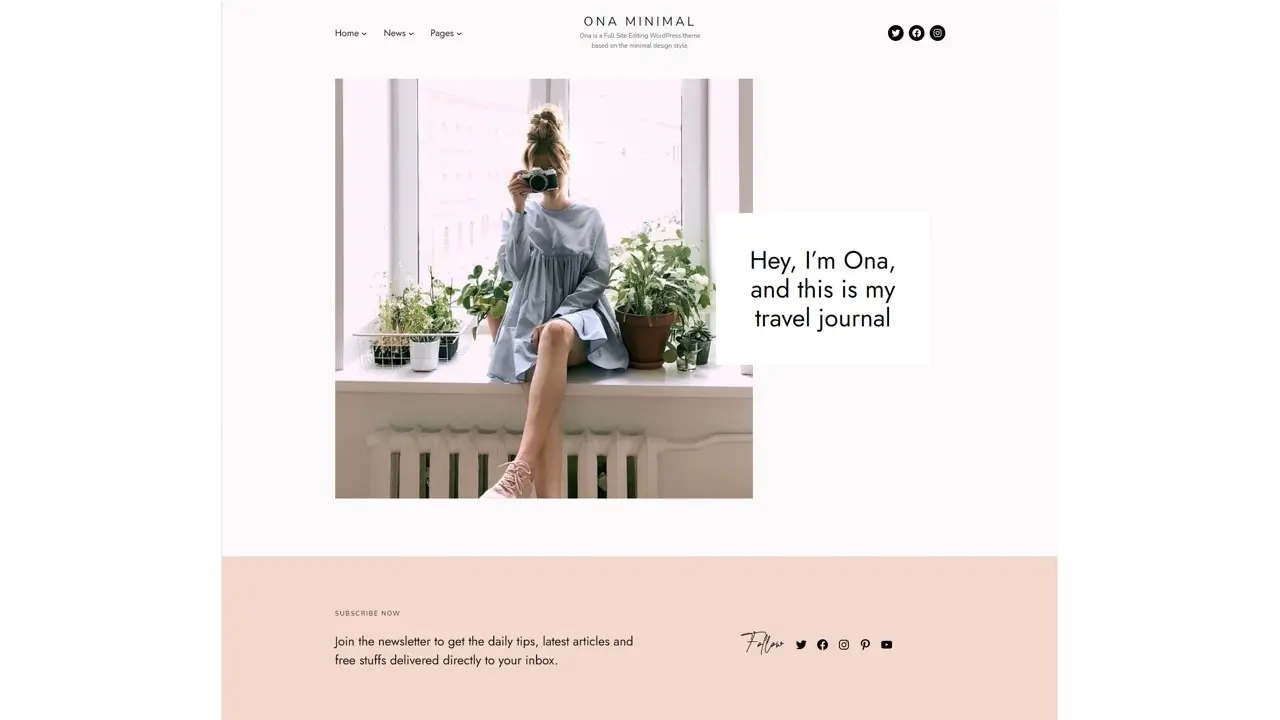
Negative Space
Negative space is the empty areas between the layout elements. This is also referred to as white space, and it’s just as important as the content. Minimalist website design needs lots of white space. It’s one of the most important design concepts for minimalist website design.
Since the elements in that white space receive all of the attention, the design of those elements is even more critical. Those elements must be designed well with more precision and with a specific intention. This is often accomplished with choosing the placement of elements on grids and adding padding to those elements.
It’s great for leading the user’s attention where you want. Negative space makes elements stand out. A cleaner layout makes the content easier to see and use. Negative space should help inform the user of the page’s hierarchy. This is accomplished by grouping elements together and by carefully choosing their placement on the page. It should also inform them of what is important and what they’re intended to do.
This example is from the WordPress theme Jaxon. It makes excellent use of negative space to highlight the CTA in the hero section.
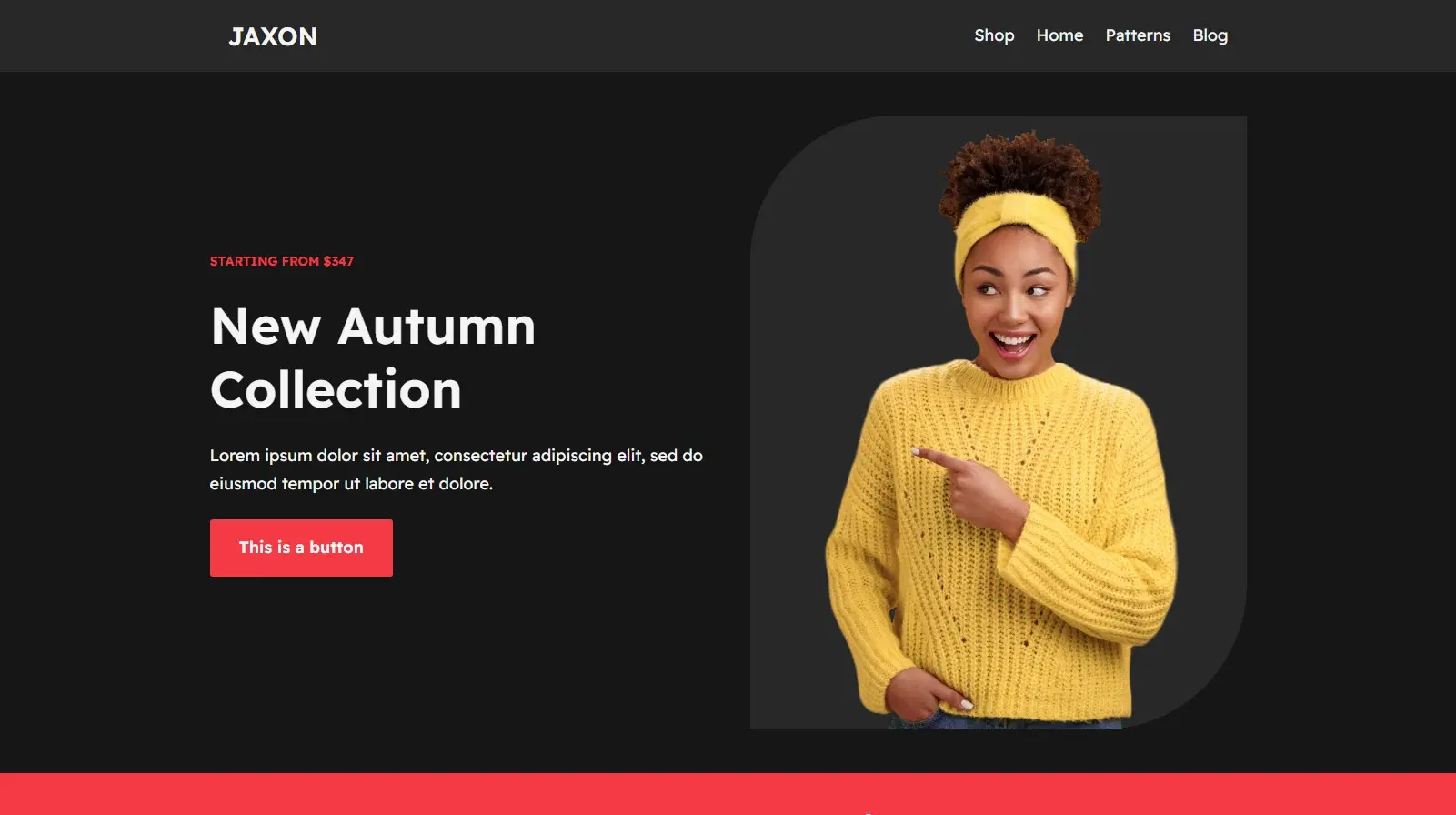
Images and Graphics
Minimalist website design uses fewer images and other graphical elements. They’re placed further apart so each one has a greater impact. They often include bold colors, but only a few colors. They’re usually smaller than most websites and aren’t used as backgrounds, buttons, or other elements. Images and graphics are selected with more precision. They’re used where they’re needed and for a specific purpose, such as informing visitors of a CTA, showcasing a product, etc.
When graphics are selected, they’re flat and use only a few colors. Another option is to use skeuomorphic graphics, which add a touch of shading to increase the 3D look of the graphical elements. This is especially helpful to show that something is clickable.
This example is the WordPress theme Experon Minimal. It’s a good example of minimalistic graphics. The icons are white and include backgrounds with a solid color that matches the rest of the website.
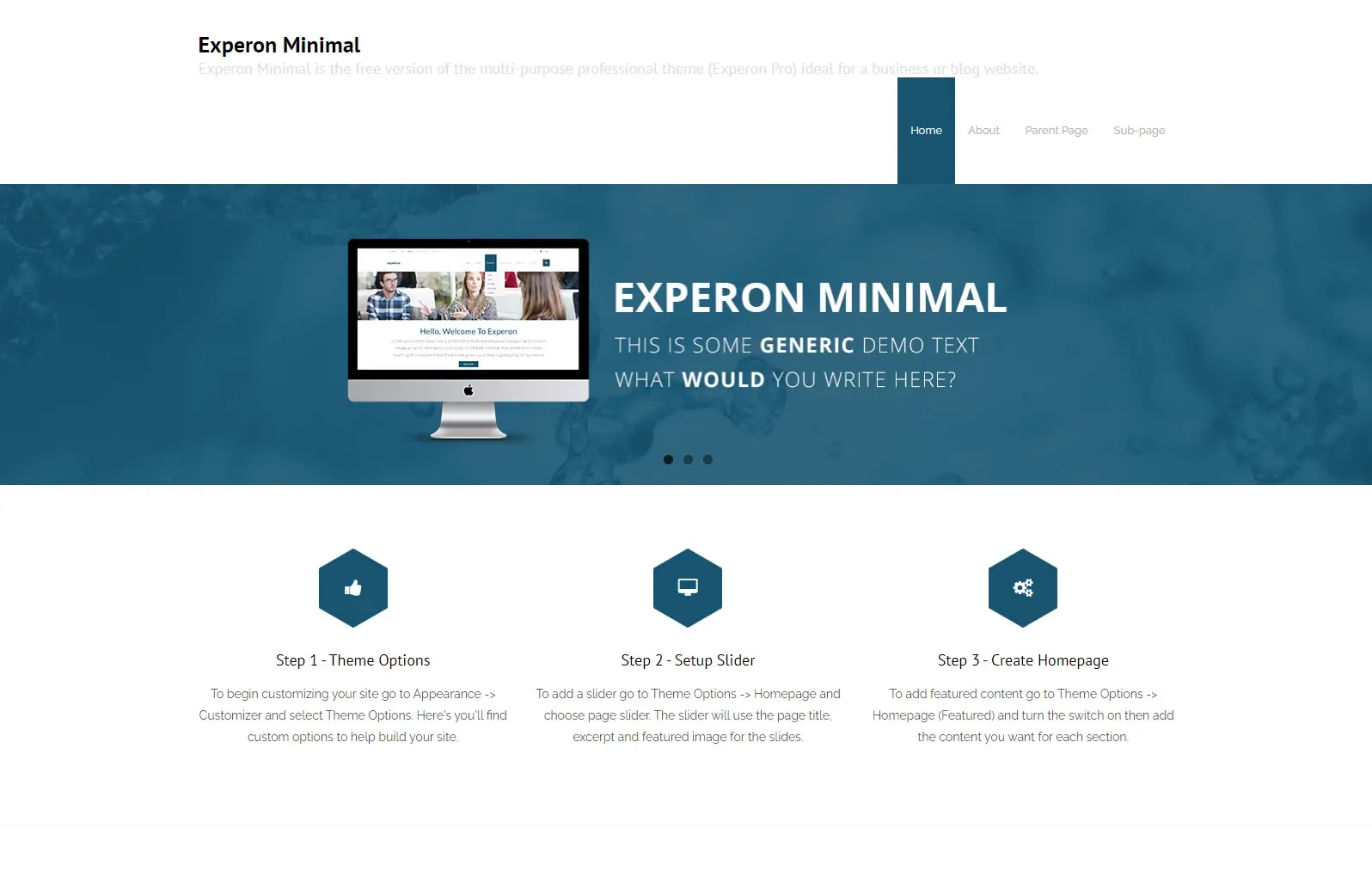
Limited Colors
Minimalist website design strategically uses fewer colors to create interest. This includes all the elements on the website pages and posts, but not the images within the content. Although they can intentionally follow the color palette of the website, images within the content are not considered part of the color palette.
Color is also used in place of images or other graphical elements. Using fewer elements makes the color more prevalent and important. Colors are more noticeable since there aren’t a lot of other elements getting in the way. They’re often subdued to push the focus on the content. The colors are sometimes monochrome, so they don’t stand out too much. It’s also possible to use bold colors.
When using bold colors, it’s best to use one bold color as an accent. Use them sparingly as an accent or to highlight clickable elements. It’s common to use one color for the backgrounds and another color for the fonts and icons. Be sure to use colors with enough contrast for good usability. Also, use colors that work well for your genre or audience.
This example is the WordPress theme Meet Minimalist. It uses one color for the highlights. For more information about choosing colors, search for articles about website colors on the Verpex blog.
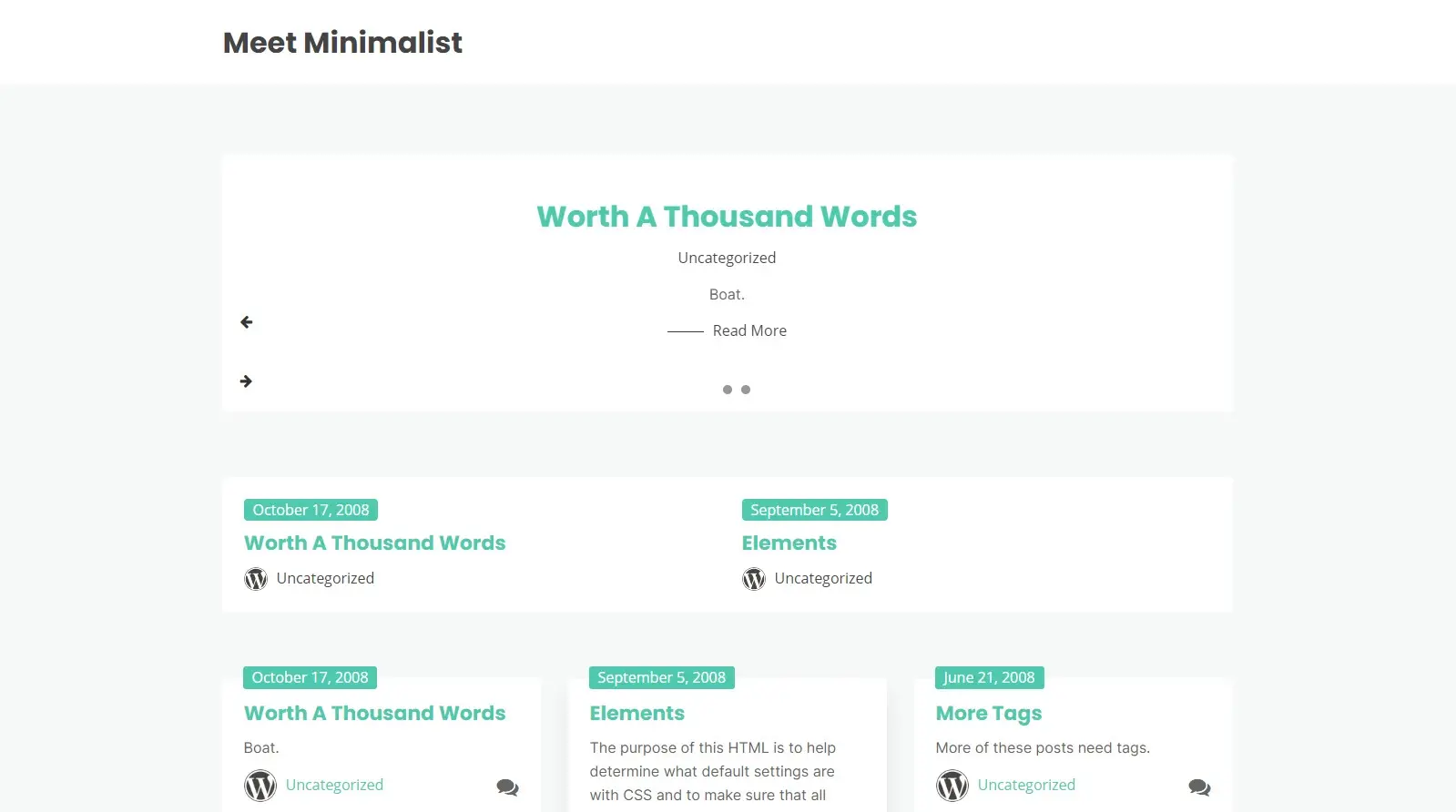
Simplified UI and Features
A minimalist website design will also simplify the user interface and menus. Each element on the website should be crucial for the website to work properly. This includes links, images, buttons, icons, graphics, text, patterns, gradients, etc. If it’s not needed for the website to function, it shouldn’t be included on the website. Removing these unneeded features simplifies the UI (User Interface) and declutters the layout. The more things a user has to interact with, the more difficult it is to determine what to interact with.
Graphics are often the main elements that are removed to give the site a minimalist website design. They usually follow the flat design approach. To take it further, this also removes unneeded icons next to the text, so the information isn’t repeated, or the icons aren’t used just to grab attention. This would simplify navigation menus and blurbs that often add icons and includes extra information, such as a short bio or explanation. This type of information can be placed on a different page. Make the UI or anything a user interacts with, as simple as possible. Be sure not to remove something that users do need. A site that’s too simple can also be difficult to use.
This example is the WordPress theme Minimalist Writer. It includes a simplified UI and only has the bare necessities.
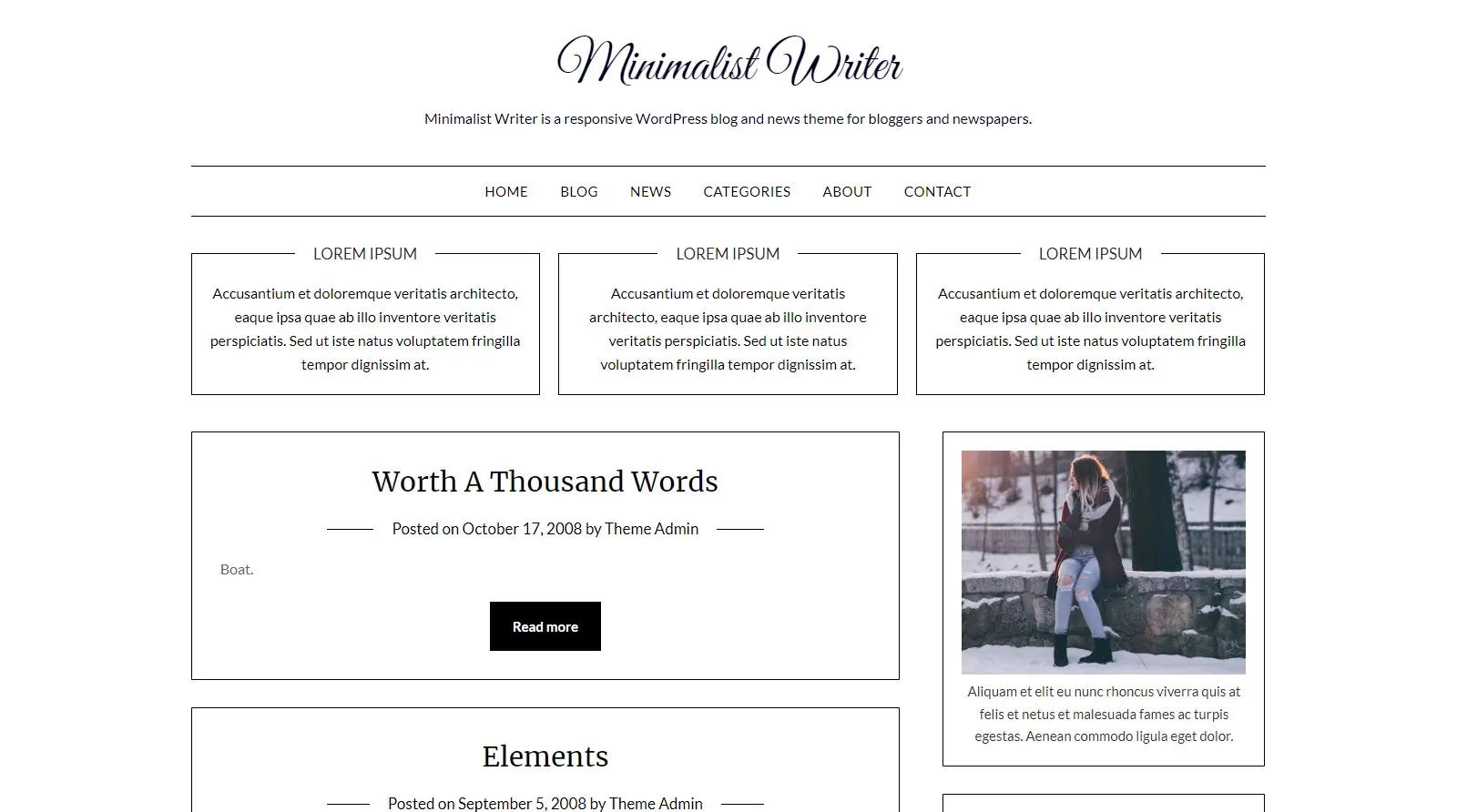
Typography and Copy
With lots of white space and no distractions on the page, typography has to take on a more important role. It also has to account for a portion of the page’s visuals and communicate the website’s mood, voice, genre, and more. Typography becomes one of the primary visual elements. Typography is great for providing this type of information, and for improving the overall visual design of the website. By removing all the other types of clutter, the same typefaces can have an even larger impact.
Vary the font style, sizes, and weights to create an interesting page. Use styled typography where it communicates something meaningful to the visitor. This will also provide the hierarchy for the page. Be careful when using overly styled text, though. It could look like an ad or become distracting. This would make users more likely to ignore it. Keep the lines of text as short as possible, using only the words you need.
This example is the WordPress theme Wisdom Minimal. It makes excellent use of typography. Even the back-to-top button includes text.
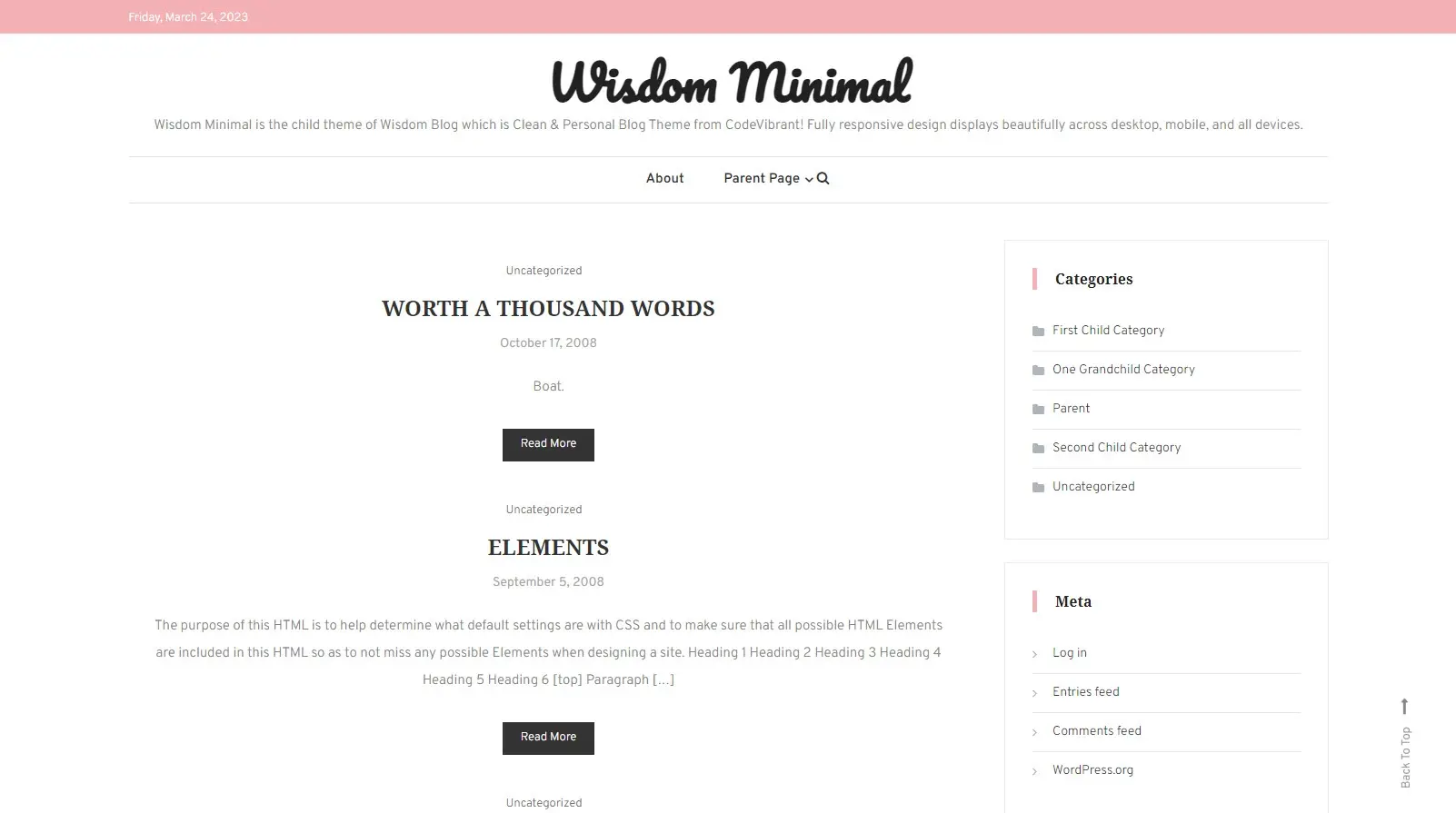
Visual Hierarchy
The placement of the elements creates a clear visual hierarchy in minimalist website design. This includes negative space, text, and images. The layout often follows an f-shaped reading pattern described by the Nielson Group. This places the content in a way that requires the visitor to start at the top of the content area and move from left to right, then down and back to the left and move to the right again. The rest of the area uses negative space.
Readers intuitively scan the page with this pattern. This is considered bad for content unless the page is designed specifically to accommodate this practice. This reading practice is excellent for minimalistic website design. Following the f-shape to create the visual hierarchy steps the visitor through the content in a way that’s natural to them.
This example is the Twenty Twenty-Three WordPress theme from Automattic. It follows the f-shape and uses most of the elements we’ve discussed in this post such as negative space, typography, and limited colors.
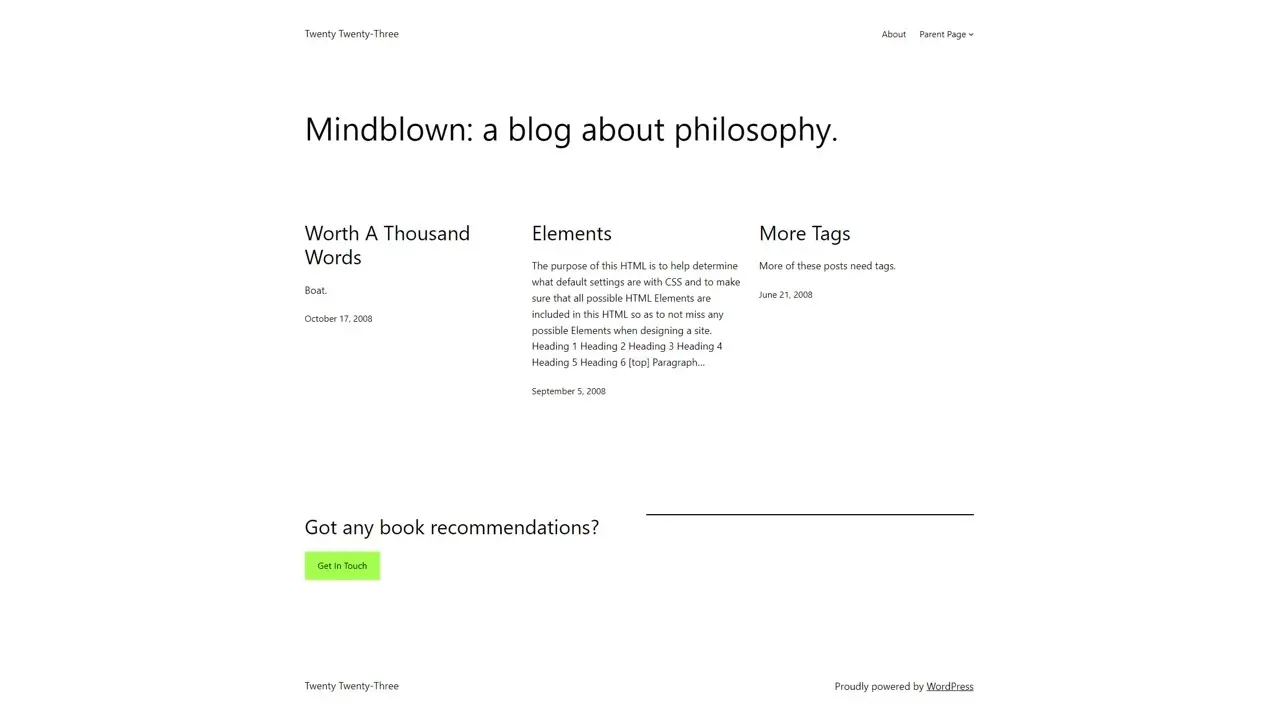
Symmetry
Symmetry provides a visual balance that improves UX (User Experience) and makes the visual hierarchy easy to understand. The primary element, such as the main message or image, becomes the central focus. Symmetry is often built on a grid and follows a horizontal line, a vertical line, or a diagonal line. Symmetry can also be radial, meaning that it extends in multiple directions from a central point. Another popular option is to place elements with an alternating symmetry. We often see this in a timeline, steps of a process, or a blog feed.
An easy way to create symmetry is to copy and paste the same blocks and change the content, following a symmetrical layout design. This way, each block uses the same settings. For example, place a text block on the left and a button on the right. Next, copy both and paste them in mirror under the first set of blocks. Then, change the content. This keeps the settings the same and builds the symmetry you want.
This example is the WordPress theme Journey Blog. It uses an alternating layout to create interesting symmetry that’s satisfying to see.
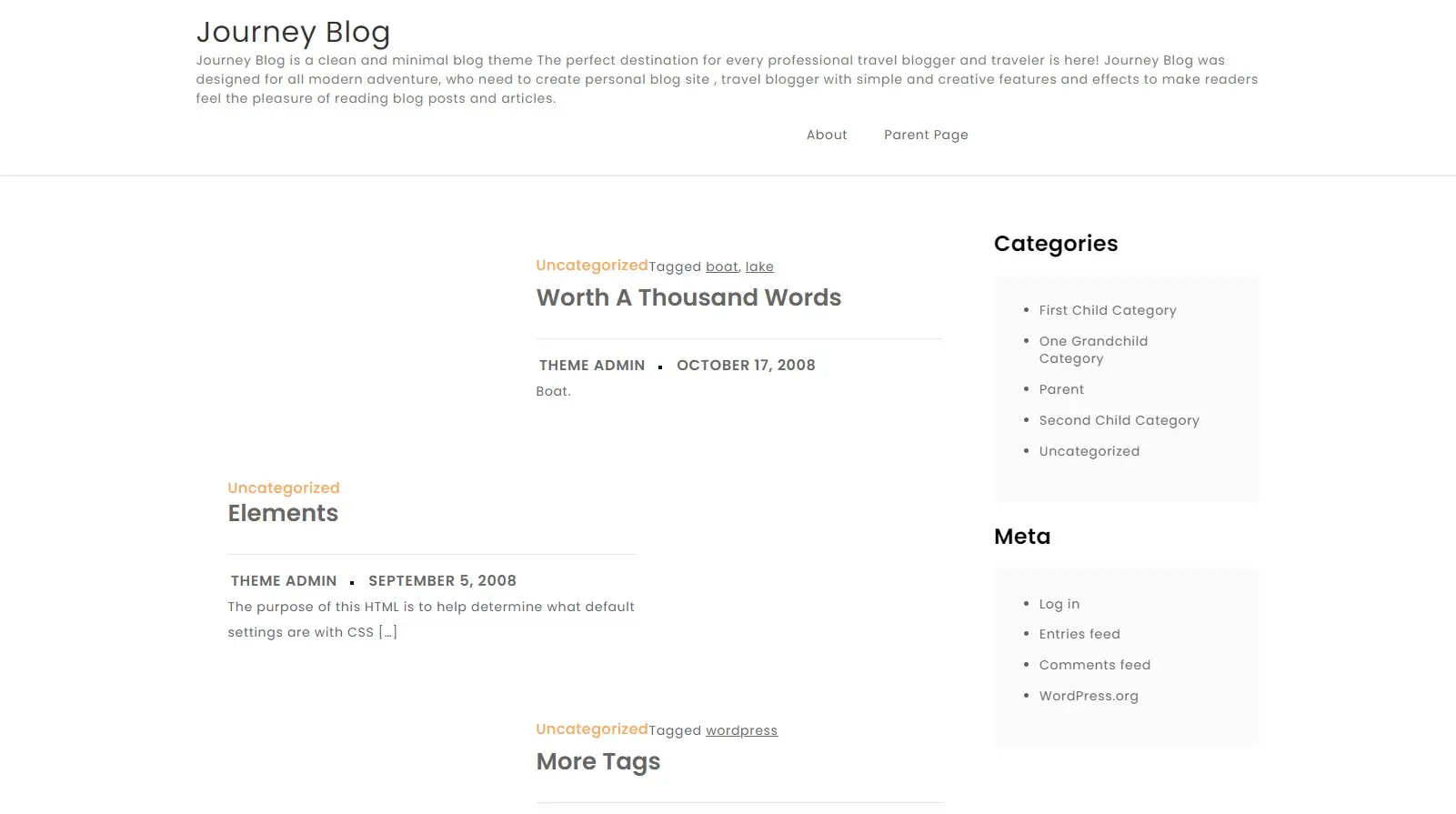
Advantages and Disadvantages of Minimalist Website Design
Advantages of Minimalist Website Design
Disadvantages of Minimalist Website Design
Ending Thoughts on Minimalist Website Design
That’s our look at minimalist website design. All of the points we’ve discussed work together to create a minimalist design. However, there will be variations in the way these points are used. Some designers stick to them more strictly than others. Some will bend the rules a little, while others develop new ways to combine certain points and leave out others. This places some designs on the edge of minimalism and others just over that edge.
A lot of thought and care go into a well-designed minimalistic website. Following the points we’ve covered here as a guideline will help you create an amazing minimalist website that looks great and your visitors will love.
We want to hear from you. Do you use minimalist website design for your website? Let us know about it in the comments.
Frequently Asked Questions
Why should I create a website?
There are many reasons why you should create a website if you’re an artist. You can use it to create a place where people can learn about you, talk about your art, or show off your work.
How do I choose a design for my website?
One of the most important things when creating a website for your art is the design. Even though your pieces of art might be amazing, people will leave if your site is hard to navigate. This is why it’s important that the site is easy on the eyes and easy to navigate.
Are website builders easy to use?
One of the easiest ways to build a website is with a website builder. Using a website builder doesn't require any programming and coding skills.
What are the customization options with a website builder?
Although website builders usually have some customization settings, like templates, fonts, margins editing, and so on, when compared to CMSs, it lacks customization options.

Randy A. Brown is a freelance writer from east TN specializing in WordPress and eCommerce. He's a longtime WordPress enthusiast and loves learning new things and sharing information with others. If he's not writing or reading, he's probably playing guitar.
View all posts by Randy A. Brown















